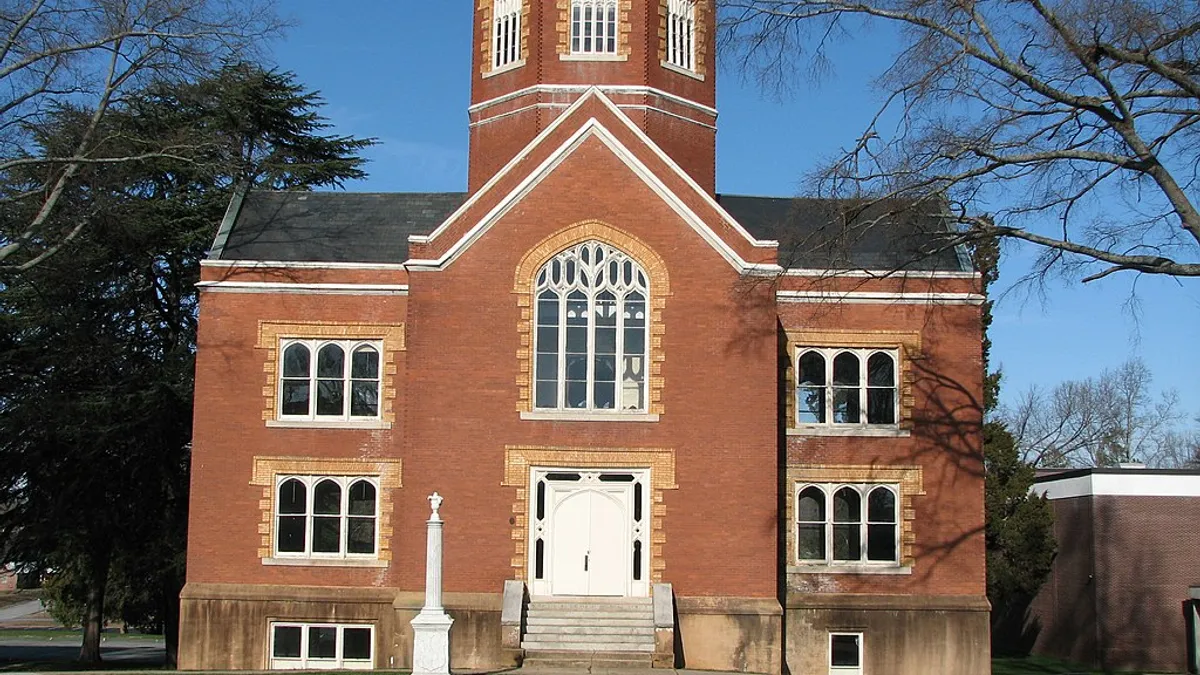In late June, Alliance University’s governing board voted to close the 140-year-old institution at the end of August. The decision came just days after Alliance’s accreditor, Middle States Commission on Higher Education, said it would pull the Christian college’s accreditation, in part over concerns about its finances.
Like many other small colleges, it had been operating in the red for years as it struggled to boost enrollment. To shed some of its mounting debt, Alliance sold its Nyack, New York, campus in 2020, but the move wasn’t enough to erase its financial woes.
By the time Alliance’s board made the call to shut down, more than a dozen nonprofit colleges had also announced during the past year that they were either closing or merging into other institutions.
The count includes other high-profile closures, such as Cabrini University, which has suffered from financial difficulties and flagging enrollment. The Pennsylvania institution said it would close next year and sell its campus to nearby Villanova University, a fellow Roman Catholic institution.
Similarly, Medaille University made headlines when it attempted to merge with Trocaire College, a nearby private institution in New York. But when the deal fell through, Medaille succumbed to its financial struggles.
College closures are nothing new. But pundits are closely watching whether they will pick up as the higher education sector faces a slew of issues ranging from waning faith in the worth of a college degree to increasing operating expenses and shifting demographics.
Despite the litany of issues that colleges are facing, higher education experts don’t necessarily expect a mass wave of closures. Robert Kelchen, higher education professor at the University of Tennessee, Knoxville, predicts that closures may pick up slightly compared to the past year as colleges struggle with enrollment and increasing costs.
Mark Krafft, partner at consultancy Bain & Co., echoed that prediction.
“We’ve seen so many articles about the end of higher ed,” Krafft said. “But if we look to the past to predict the future, it simply hasn’t happened in that way.”
Which colleges are at risk?
Small private colleges, especially those in rural areas, are among the most at risk for closure, according to higher education experts. Shifts in enrollment have a greater impact on their budgets, and they typically don’t have large endowments to cushion the blow.
Many of the at-risk colleges have fewer than 2,000 students, said Krafft.
“Some of the larger, more financially equipped institutions are able to invest in new programs and offerings and technologies,” Krafft said. Yet it can be more challenging for small private colleges to make these same investments, he said.
Cazenovia College, in New York, is another case in point. The institution announced late last year that it was closing due to financial strain exacerbated by the pandemic and high inflation. The college had just 745 students in fall 2022, down from 990 a decade prior.
Around the same time, Holy Names University, in California, said it would shut down after a failed search for a merger partner. With 959 students in fall 2022, its enrollment had also declined from a recent high of 1,353 in 2012.
Still, higher education experts say many of the remaining small colleges can pull through.
“These small private colleges are either really resilient or really stubborn, depending on who you talk to,” Kelchen said. “Somehow, some way, most of them find a way to make it work.”
What are the signs of college in danger?
Many of the problems plaguing higher education have been around for years, such as rising tuition discounting rates and students questioning the value of college.
But colleges have been bracing for a new headwind — the so-called demographic cliff. This refers to a drop-off in high school graduates expected to start around 2025 due to declining birth rates during the Great Recession.
That year could usher in a greater number of college closures, according to Michael Horn, author of “Choosing College” and other books on education.
“We’ll see sort of a similar level of closures this coming year, and then the real uptick will happen after 2025,” Horn said.
A few telltale signs usually point to a college in danger. For one, colleges may attempt to “cut their way out of a challenging position,” Krafft said, which could include hiring and pay freezes, staff and benefit reductions, and, eventually, eliminating some student services and program offerings.
Although well-intentioned, these strategies can backfire by causing enrollment declines in and of themselves.
Colleges may also look for quick fixes, such as opening a new campus in a different city.
“That kind of expansion strategy is extremely costly, and very high risk,” Krafft said.
He recommends that colleges take a hard look at their offerings to determine what they’re delivering that their target student populations want — and what is missing the mark.
Colleges that have been successful in catering to adult learners are good examples, Krafft said via email. For instance, Southern New Hampshire and Western Governors universities have recognized that traditional residential models don’t meet the needs of that group.
Once colleges determine they’re changing some of their programs or models to serve their target students, they can discuss the right business processes needed to support those changes.
“That is more of a balanced view that looks a little bit at the cost side, but also more at the demand side,” Krafft said.



















